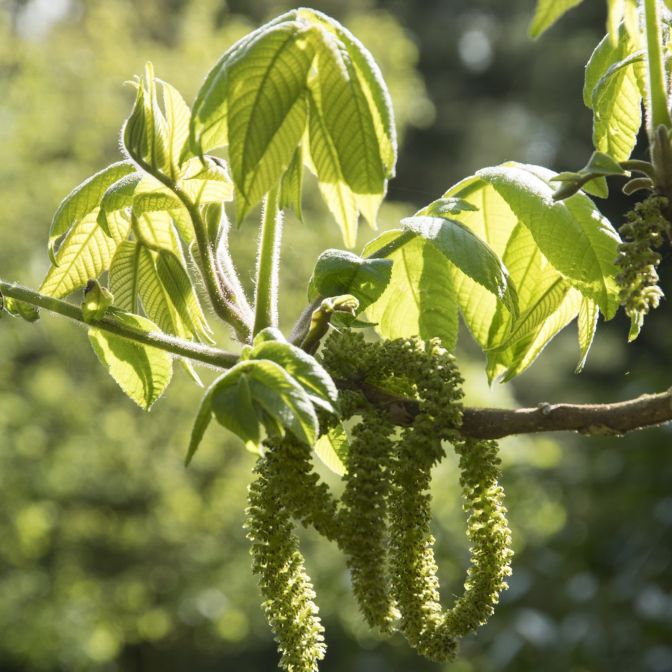Butternut
Plant Type: Dormant, bare-root
Zones: 3-8
Soil Type: Clay, Loamy & Sandy Soils
Site Selection: Full Sun, Partial Sun
Mature Height & Width: 40-60' Height and 35-45' Spread
Growth Rate: Slow - 8-12" per year once established
Moisture Requirements: Dry to average soils






Butternut
Juglans cinerea
The Butternut is a beautiful and slow growing shade tree which is hardy in colder climates. This tree produces drooping clusters of sweet nuts which are used in baking and loved by wildlife. Has a distinctive ridged and furrowed bark. Easier to grow than Black Walnut in northern areas. It's a good idea to plant more than one tree for proper pollination. These are hard to find seedlings, but we have them!
This selection is also known as the White Walnut and the Oilnut.
The Butternut lives up to 75 years old. Like the Black Walnut, the Butternut tree produces Juglone, a substance which can be harmful to other trees within its root zone. Juglone can harm or kill some other trees and plants within a 50' radius if the Butternut tree is mature.
Common uses:
- Shade tree
- Sweet, edible nuts are used for baking
- Butternut fruit is eaten by deer and squirrels
- Cold hardy alternative to the Black Walnut
Butternut fruit provides food for squirrels and other rodents and the leaves are palatable to white-tailed deer.





